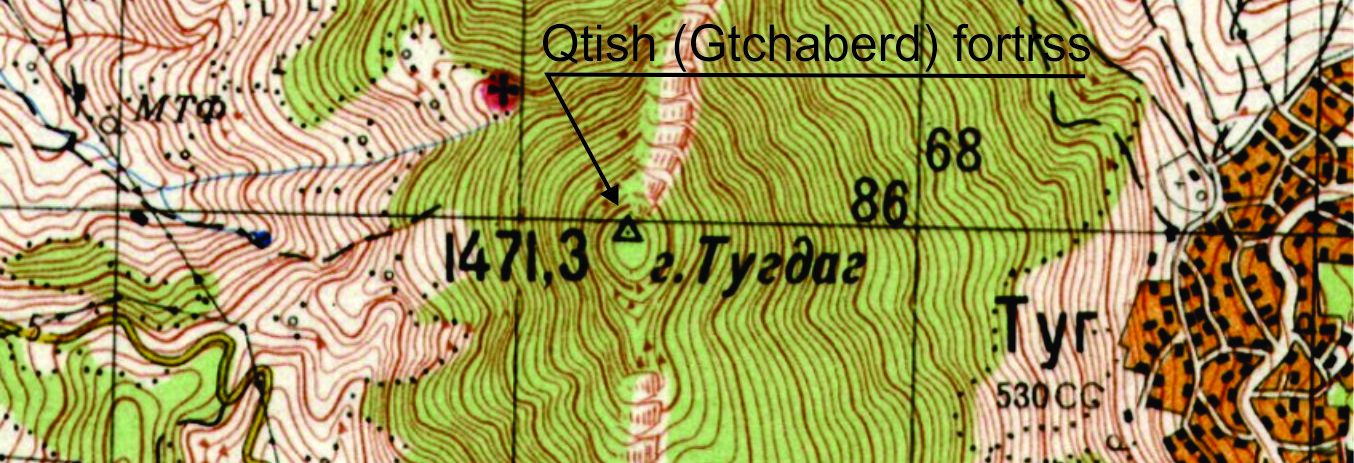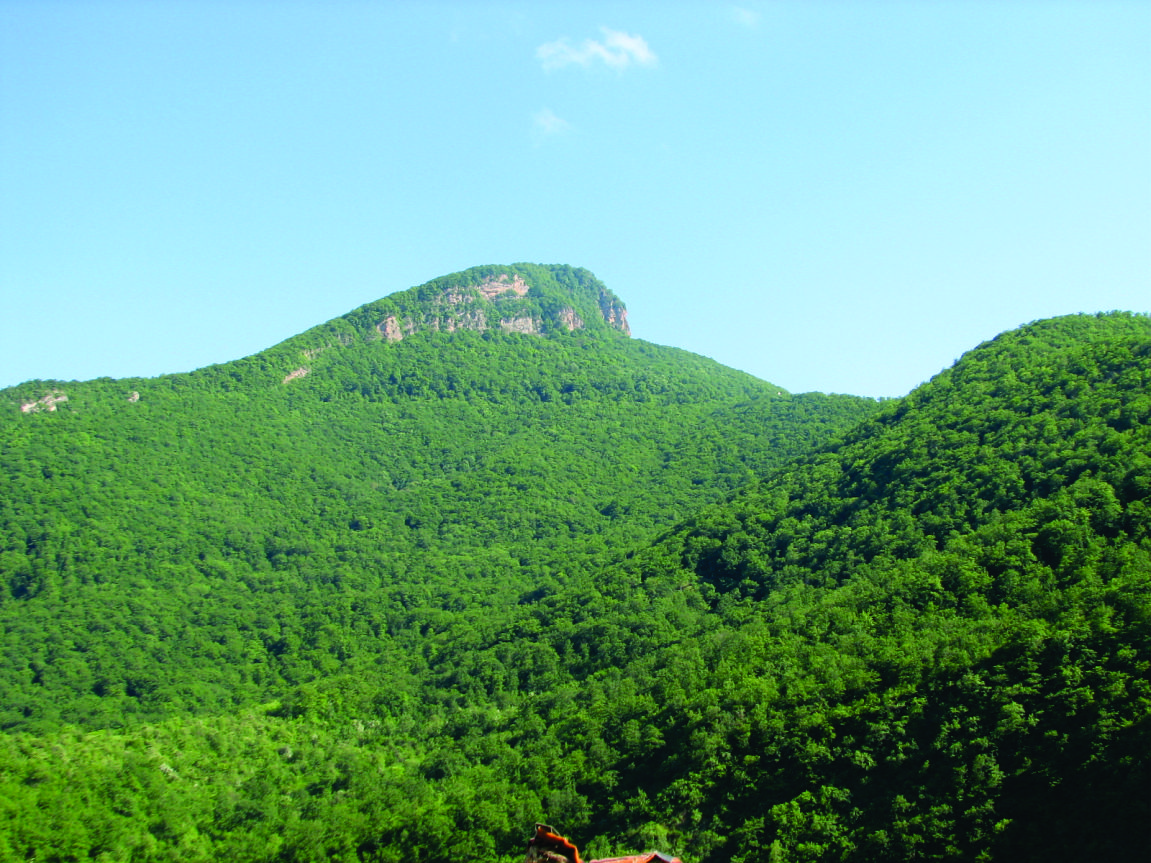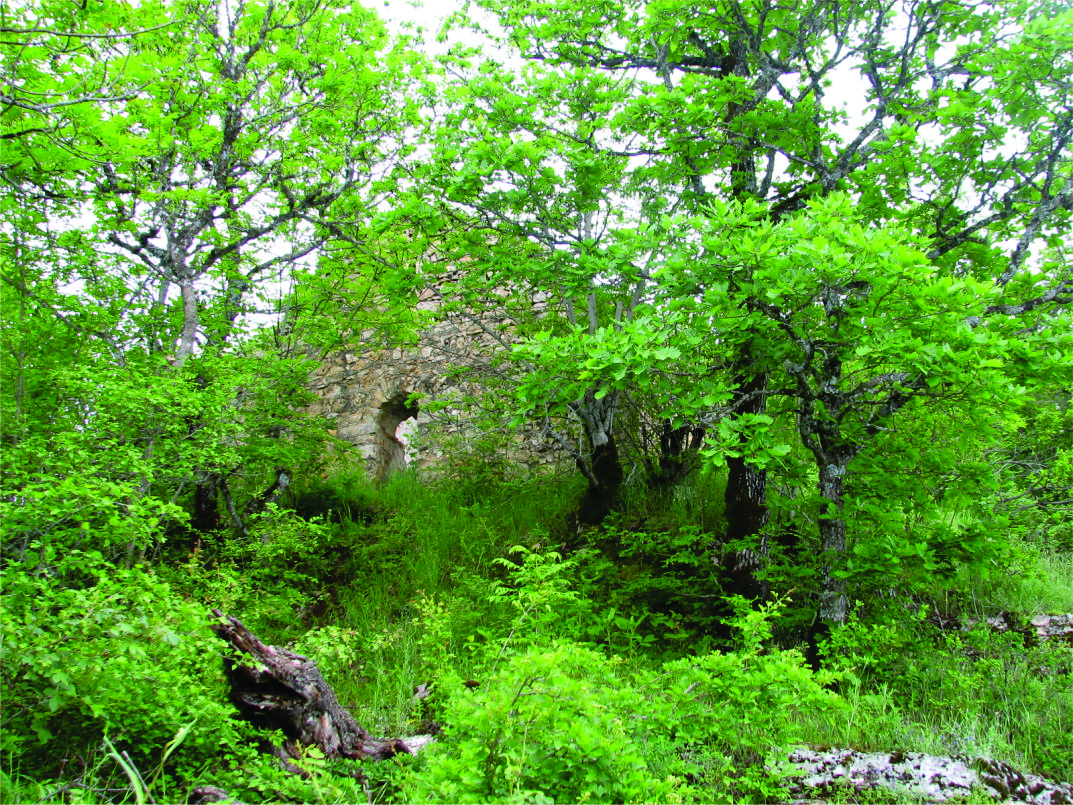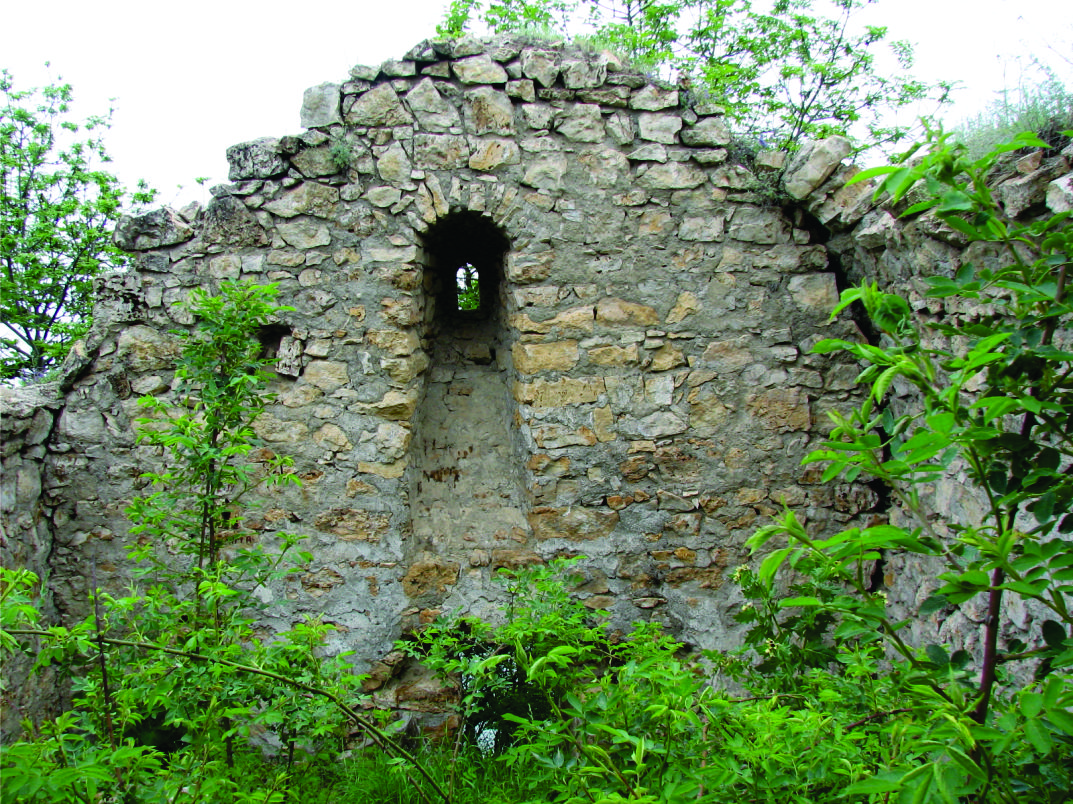The Fortress of Qtish
Location
The monument is located on Gtich (Qtish) mountain, near Togh village in the Hadrut region (Fig. 1). It is currently under Azerbaijan's control following the 44-day war.


Fig. 1 The general view of the fortress, photo is from the Certificate of Monuments of the Ministry of Education, Science, Culture, and Sport of the Republic of Artsakh.
Historical overview
Tovma Artsruni revealed information about the fortress for the first time. In accordance with the latter's testimonies , during the Arab invasions of 853, the fortress's defenders, led by Lord Yesa, resisted the Arab general Bugha's numerous troops for more than a year, repeatedly repelling them (Tovma Artsruni 2010, 197-203).
Architectural-compositional examination
It is one of Artsakh's ancient fortresses. It is surrounded by rock masses on the west and south sides, as well as on the north side, and was once walled on the east side, which is now partially preserved.
The church, also known as "Tej," (Figs. 2, 3), the cemetery, several khachkars, an earthen reservoir with internal plastering and an arched vault (Fig. 4), and traces of many other buildings and houses, the number of which, according to M. Barkhudaryants, reached 140, have been preserved in the area of the fortress and its surroundings. (Barkhudaryants 1895, 84).

Fig. 2 The general view of the church, photo is from the Certificate of Monuments of the Ministry of Education, Science, Culture, and Sport of the Republic of Artsakh.

Fig. 3 The general view of the church, photo is from the Certificate of Monuments of the Ministry of Education, Science, Culture, and Sport of the Republic of Artsakh.

Fig. 4 The reservoir in the fortress area, photo is from the Certificate of Monuments of the Ministry of Education, Science, Culture, and Sport of the Republic of Artsakh.
The condition before, during, and after the war
The monument was in half-ruined condition prior to the war. There is no information available about the monument's condition during or after the war.
Bibliographic examination
The first information about the monument can be found in the testimonies of Tovma Artsruni (Tovma Artsruni 2010, 197–203).
Only M. Barkhudaryants' work preserved information about the half-ruined castle (Barkhudaryants 1895, 84-85).
Unfortunately, the sources cited above do not refer to the specific architectural elements of the fortress, making it difficult to date the monument precisely.
Bibliography
- Barkhutariants 1895–Barkhutariants M., Artsakh, Baku, Aror.
- Tovma Artsruni 2010-Tovma Artsruni Anonymous, History of the House of Artsrunik, the “Matenagirk Hayots" (or Armenian Classical Authors), Antelias-Lebanon.
The Fortress of Qtish
Artsakh